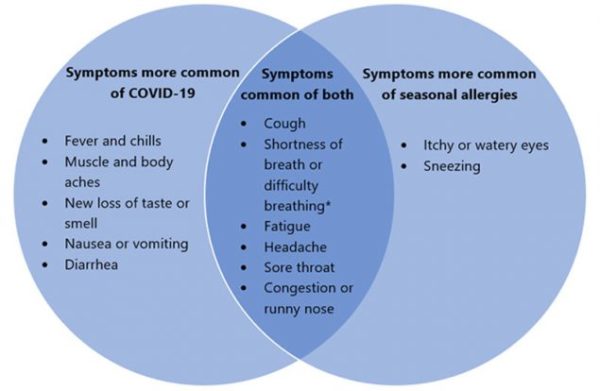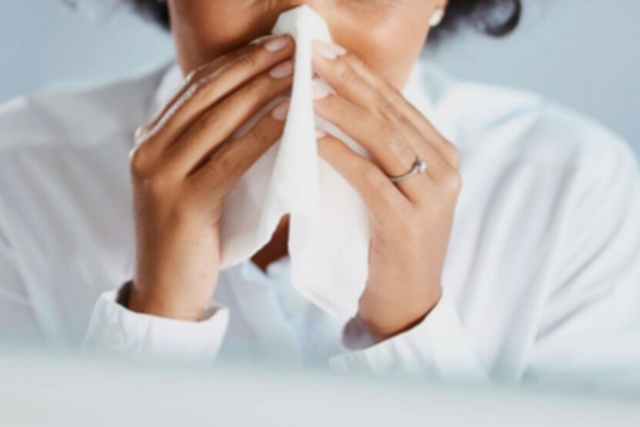More and more people are experiencing migraines and stuffy noses as we enter Spring. The Centre for Disease Control (CDC) has advised individuals to familiarise themselves with the differences in symptoms for COVID-19 and seasonal allergies.
“COVID-19 is a contagious respiratory illness caused by infection with a new coronavirus (called SARS-CoV-2, the virus that causes COVID-19). Seasonal allergies triggered by airborne pollen can lead to seasonal allergic rhinitis, which affects the nose and sinuses, and seasonal allergic conjunctivitis, which affects the eyes,” it said. “COVID-19 and seasonal allergies share many symptoms, but there are some key differences between the two. For example, COVID-19 can cause fever, which is not a common symptom of seasonal allergies. The image below compares symptoms caused by allergies and COVID-19.”
Because some of the symptoms of COVID-19 and seasonal allergies are similar, it may be difficult to tell the difference between them, and you may need to get a test to confirm your diagnosis.
“This is not a complete list of all possible symptoms of COVID-19 or seasonal allergies. Symptoms vary from person to person and range from mild to severe. You can have symptoms of both COVID-19 and seasonal allergies at the same time,” the CDC added.

“There is not enough scientific information at this time to know whether having seasonal allergies puts you at higher risk of contracting COVID-19 or having more severe symptoms if you do contract COVID-19. We do know that older adults and people who have severe underlying medical conditions like obesity, diabetes, or heart or lung disease are at higher risk for developing more serious complications when they have COVID-19,” the CDC said.
The best way to protect yourself against seasonal allergies is to reduce your exposure to pollen.
During high pollen days:
– Limit your time outdoors and seek indoor spaces with clean air.
– Create a cleaner air space at home to protect yourself from outdoor air irritants during the COVID-19 pandemic. Use a portable air cleaner in one or more rooms. Portable air cleaners work best when run continuously with doors and windows closed.
– Keep your cleaner air space a comfortable temperature by using air conditioners, heat pumps, fans, and window shades.
– If you have a forced air system in your home, consult a qualified heating, ventilation, and air conditioning (HVAC) professional about different filters (HEPA or MERV-13 or higher) and settings (“Recirculate” and “On” rather than “Auto”) that can be used to reduce indoor air irritants.
– If outdoors, avoid activities that stir up pollen, such as mowing lawns or raking leaves. When returning indoors, take a shower and change clothes.
Picture: Pixabay






